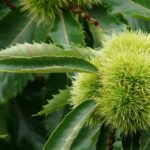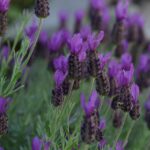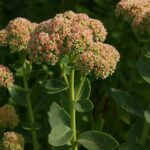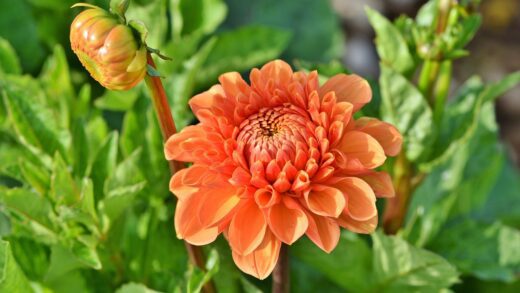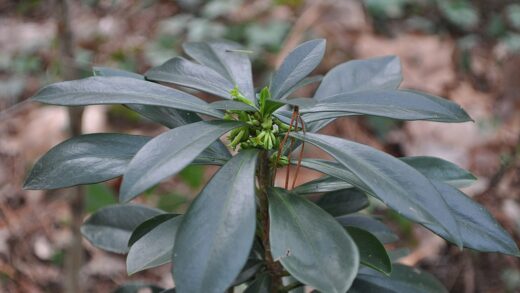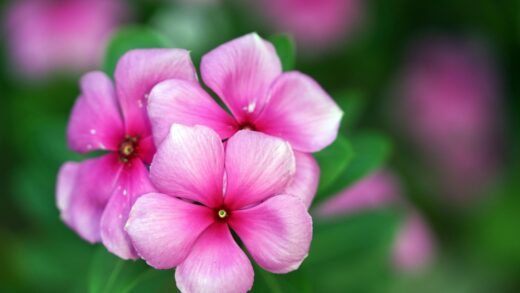The beautiful bleeding heart, known for its distinctive heart-shaped flowers, is a perennial that brings a touch of elegance to any shade garden. To ensure its vigorous growth and abundant flowering, it is crucial to understand its fundamental needs from the outset. This plant thrives in moist, well-drained soil rich in organic matter, mimicking its native woodland habitat. Providing the right growing conditions is the first and most critical step towards a healthy plant, as it lays the foundation for all subsequent care practices. Proper siting and soil preparation will save you a great deal of effort later on and will be rewarded with a lush, flourishing specimen.
Achieving the ideal soil composition is a key aspect of caring for this plant. A loamy or sandy loam soil is generally preferred, but the plant is adaptable as long as the soil does not become waterlogged. Heavy clay soils should be amended with compost or other organic material to improve drainage and aeration, which is vital for preventing root rot. The soil pH should ideally be slightly acidic to neutral, in the range of 6.0 to 7.0, for optimal nutrient uptake. Regular soil testing can help you monitor and adjust the pH and nutrient levels as needed, ensuring your plant has access to everything it requires for healthy development.
Another fundamental aspect of care involves understanding the plant’s life cycle. The beautiful bleeding heart is an ephemeral plant, meaning it typically enters a period of dormancy after flowering, especially in warmer climates. This is a natural process and should not be mistaken for a sign of a problem; the foliage will turn yellow and die back. During this time, the plant is simply conserving energy in its roots for the next growing season. Recognizing this cycle will prevent unnecessary intervention and allow the plant to follow its natural course of growth and rest.
Finally, consistency is paramount in the care of this perennial. Regular watering, especially during dry spells, and timely application of nutrients will support its growth throughout the active season. It is also important to keep the area around the plant free of weeds, which can compete for water and nutrients. By establishing a consistent care routine, you create a stable environment where your beautiful bleeding heart can not only survive but truly thrive, gracing your garden with its unique blossoms year after year.
The right location and light conditions
Choosing the perfect spot in your garden is one of the most significant decisions you will make for the health of your beautiful bleeding heart. This plant prospers in partial to full shade, making it an excellent choice for woodland gardens or the north-facing side of a house. Direct, intense sunlight, particularly in the afternoon, can scorch the delicate foliage and cause the flowers to fade prematurely. An ideal location would receive gentle morning sun and then be shaded for the rest of the day, protecting it from the harsh midday heat and light intensity.
More articles on this topic
The quality of shade also matters. Dappled shade, such as that found under the canopy of deciduous trees, is perfect as it mimics the plant’s natural environment. This type of light is bright enough to encourage robust growth and flowering but filtered enough to prevent damage. If you do not have a natural woodland setting, you can create a similar environment by planting it near taller shrubs or structures that provide shade during the hottest part of the day. Careful observation of the light patterns in your garden throughout the day will help you identify the most suitable microclimate.
While the beautiful bleeding heart is a shade-loving plant, it is important to note that very deep shade can have its drawbacks. In locations with insufficient light, the plant may become leggy, with elongated stems and sparse foliage as it stretches towards the light source. Furthermore, flowering may be significantly reduced in dense shade, as the plant may not receive enough energy to produce its characteristic blooms. Finding a balance is key; a spot with bright, indirect light is the ultimate goal for a compact, healthy plant with a profusion of flowers.
Consider the plant’s mature size when selecting a location. The beautiful bleeding heart can grow to a considerable size, both in height and spread, so it needs adequate space to develop without being crowded by other plants. Good air circulation around the plant is also important for preventing fungal diseases, which can be more prevalent in damp, shaded conditions. By taking the time to select the right location from the start, you are setting the stage for a long-lived and visually stunning addition to your garden.
Watering and humidity requirements
Proper watering is essential for maintaining the health and beauty of the beautiful bleeding heart, a plant that loves consistently moist soil. The key is to provide regular moisture without allowing the soil to become waterlogged, which can lead to root rot and other fungal issues. During the active growing and flowering season in spring and early summer, you should check the soil moisture frequently. A good rule of thumb is to water deeply whenever the top inch of soil feels dry to the touch, ensuring the water penetrates to the root zone.
More articles on this topic
The frequency of watering will depend on several factors, including your climate, soil type, and the specific location in your garden. In hotter, drier weather, you will naturally need to water more often than in cooler, more humid conditions. Plants in sandy soils will require more frequent watering than those in soils with a higher clay content, as sandy soils drain more quickly. It is always better to water deeply and less frequently rather than shallowly and often, as this encourages the development of a deeper, more resilient root system.
This plant appreciates a humid environment, which is typical of its native woodland habitat. In areas with naturally low humidity, you can take steps to increase the moisture in the air around the plant. Grouping it with other shade-loving plants can help create a more humid microclimate as they collectively transpire. Mulching around the base of the plant not only helps to retain soil moisture but also contributes to humidity as it decomposes. These small adjustments can make a significant difference in the overall health and appearance of the foliage.
It is important to adjust your watering practices as the plant’s life cycle progresses. After the flowering period, as the plant begins to enter dormancy and the foliage starts to yellow, you should gradually reduce the amount of water you provide. Once the plant is fully dormant, it requires very little moisture, and overwatering during this period can be particularly harmful to the roots. Resume a regular watering schedule the following spring when new growth begins to emerge from the soil.
Soil and fertilization needs
The foundation of a healthy beautiful bleeding heart is rich, well-draining soil that is abundant in organic matter. This plant thrives in conditions that replicate a forest floor, so amending your garden soil with materials like compost, well-rotted manure, or leaf mold is highly beneficial. These organic amendments not only provide essential nutrients but also improve the soil’s structure, enhancing its ability to retain moisture while still allowing excess water to drain away. Before planting, it is a good practice to work a generous amount of compost into the top several inches of the soil.
When it comes to fertilization, the beautiful bleeding heart is not a particularly heavy feeder, especially if it is planted in organically rich soil. A single application of a balanced, slow-release granular fertilizer in early spring, just as new growth emerges, is typically sufficient for the entire season. Look for a fertilizer with a balanced N-P-K ratio, such as 10-10-10, to support overall plant health, including foliage growth, root development, and flower production. Over-fertilizing can be detrimental, leading to excessive foliage growth at the expense of flowers and potentially burning the plant’s sensitive roots.
If you prefer to use organic fertilizers, there are several excellent options available. A top dressing of compost or well-rotted manure applied in the spring can provide a slow and steady supply of nutrients throughout the growing season. Other organic choices include bone meal, which is a good source of phosphorus for root and flower development, and fish emulsion, which can be applied as a liquid feed. When using any type of fertilizer, always follow the application rates recommended on the product label to avoid over-application.
Monitoring your plant’s appearance can also give you clues about its nutritional needs. If the leaves appear pale or yellow and growth seems stunted, it may indicate a nutrient deficiency. However, it is important to rule out other potential causes, such as improper watering or poor drainage, before applying additional fertilizer. In a well-prepared, organically rich soil, your beautiful bleeding heart should have most of the nutrients it needs to flourish with minimal supplemental feeding, allowing its natural beauty to shine through.
Pruning and maintenance practices
Pruning the beautiful bleeding heart is generally a straightforward and minimal task, primarily focused on maintaining the plant’s appearance and health. The main pruning activity involves tidying up the plant after its flowering period. As the plant naturally begins to enter dormancy in mid to late summer, the foliage will start to yellow and die back. At this stage, you can cut the yellowing stems and leaves back to the ground level, which helps to keep the garden looking neat and can prevent the development of any fungal issues on the decaying foliage.
During the growing season, you may also want to perform some light maintenance to keep the plant looking its best. This can include removing any leaves that are damaged, diseased, or have been eaten by pests. Deadheading, or removing spent flowers, is not typically necessary for this plant, as it will not significantly prolong the blooming period. The plant has a naturally defined flowering season, and once it is finished, it will begin to channel its energy into its roots for the following year’s growth, a process that should not be interrupted.
It is important to understand that the die-back of foliage is a normal part of the plant’s life cycle and not a cause for alarm. Resisting the urge to cut back the foliage while it is still green is crucial, as the leaves are actively photosynthesizing and storing energy in the rhizomes for the next season. Cutting the plant back prematurely can weaken it and may result in reduced flowering in the following year. Patience is key; wait until the foliage is predominantly yellow or brown before you reach for the pruners.
Other general maintenance tasks include ensuring the plant has adequate space and is not being overcrowded by more aggressive neighboring plants. Regularly applying a layer of organic mulch around the base of the plant is also a highly recommended practice. Mulch helps to suppress weeds, conserve soil moisture, and keep the roots cool, all of which contribute to the overall health and vigor of your beautiful bleeding heart, ensuring it remains a stunning feature in your shade garden for years to come.
Overwintering and dormancy care
Proper care during the winter months is crucial for the long-term survival and performance of the beautiful bleeding heart. As a hardy perennial, it is well-equipped to handle cold temperatures, but a little extra protection can make a significant difference, especially in colder climates or for newly planted specimens. The most important step in preparing the plant for winter is to apply a thick layer of mulch over the crown after the ground has frozen lightly. This layer of insulation protects the roots from the damaging effects of freeze-thaw cycles, which can heave the plant out of the ground.
The timing of mulch application is important. You should wait until after the first hard frost has occurred and the plant is fully dormant. Applying mulch too early, while the ground is still warm, can trap moisture and heat, potentially leading to crown rot and providing a cozy home for overwintering pests. Suitable mulching materials include shredded leaves, straw, pine needles, or wood chips. A layer of about two to four inches is generally sufficient to provide the necessary protection without smothering the plant.
In the spring, as the weather begins to warm and the threat of hard frosts has passed, you should gently rake back the winter mulch. This allows the soil to warm up more quickly and enables new growth to emerge unimpeded. Be careful when removing the mulch to avoid damaging the delicate new shoots that may be just below the surface. Leaving a thinner layer of mulch in place can be beneficial for conserving moisture and suppressing weeds during the upcoming growing season.
For gardeners growing the beautiful bleeding heart in containers, winter care requires a different approach. Potted plants are more vulnerable to cold temperatures because their roots are not insulated by the large mass of surrounding soil. In most climates, it is best to move the container to a sheltered location, such as an unheated garage, a cold frame, or a protected porch. The goal is to keep the roots frozen but protected from extreme temperature fluctuations. The soil should be kept only very slightly moist throughout the winter to prevent the roots from completely drying out.










